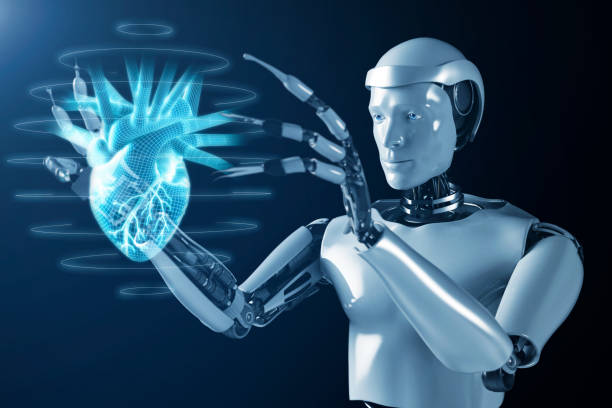How AI is Revolutionizing Health Diagnostics and Telemedicine in 2025
AI in Health Diagnostics and Telemedicine: Transforming the Future of Healthcare

In the last few years, Artificial Intelligence (AI) has begun to reshape the landscape of healthcare. Wearable devices, smart diagnostics tools, virtual consultations—all these powered by AI—are now making it possible for people to receive faster, more accurate, and more accessible medical care. Telemedicine, combined with AI, is especially opening doors for patients who live far from hospitals or cannot travel due to their health conditions.
What is AI in Health Diagnostics and Telemedicine?
At its core, AI in health diagnostics refers to the use of algorithms, machine learning, deep learning, and other smart technologies to analyze medical data—like images, lab reports, patient histories—and help doctors detect disease faster, more accurately, and sometimes earlier than human observation alone.
Telemedicine is the practice of delivering medical care remotely using telecommunications. Together, AI + telemedicine mean that a patient could send data (symptoms, image of skin condition, heart rate, etc.) to a system, get preliminary analysis by AI, and connect with a doctor online if needed—all without being physically present at a clinic.
Key Use Cases
1. Early Detection and Imaging Analysis
AI systems can analyze X-rays, MRIs, CT scans, and other medical images to highlight areas of concern (tumors, lesions, fractures) much faster than manual reading. This helps save time, especially in emergencies. Studies show AI for diabetic retinopathy screening in ophthalmology performs with high accuracy. :contentReference[oaicite:0]{index=0}
2. Remote Patient Monitoring
Wearable devices (smartwatches, patches, sensor-equipped clothing) continuously monitor vitals like heart rate, blood oxygen, glucose etc. AI analyses these data streams and alerts healthcare providers or patients if something looks wrong. This is especially useful for chronic illnesses like heart failure, diabetes. :contentReference[oaicite:1]{index=1}
3. Virtual Assistants, Chatbots, and Symptom Checkers
AI-powered chatbots can guide patients in reporting symptoms, give basic health advice, remind about medication, schedule appointments, or triage whether a case requires urgent attention. They improve access and ease pressure on medical staff. :contentReference[oaicite:2]{index=2}
4. Personalized Treatment Plans and Predictive Analytics
Using data from past medical records, lifestyles, genetics, AI can predict risks (e.g. heart disease, strokes) and recommend personalized treatment or preventive measures. For example, AI can suggest medication adjustments or lifestyle changes based on trends in the data. :contentReference[oaicite:3]{index=3}
Benefits of AI in Diagnostics & Telemedicine
- Faster Diagnoses: AI processes large amounts of data quickly, which helps reduce wait times for results.
- Increased Accuracy: When well-trained, AI can catch subtle signs that humans might miss.
- Greater Access: Remote and rural patients can get diagnostic support without traveling long distances.
- Cost Efficiency: Reduces unnecessary tests, hospital visits; improves workflow for healthcare providers.
- Continuous Monitoring: Vital data is collected in real time, so possible problems are spotted early.

Challenges & Limitations
However, there are several important challenges to address:
- Data Privacy & Security: Medical data is sensitive. Ensuring patient data is stored and shared securely is essential.
- Algorithmic Bias: If AI models are trained on non-diverse data, they may be less accurate for certain populations.
- Regulation & Approval: Many AI tools need regulatory clearance (FDA or local) which can be time-consuming and expensive.
- Dependence on Data Quality: Poor quality images or incomplete patient history can lead to wrong conclusions.
- Access to Technology: Not everyone has smartphones, good internet, or wearables. This limits telemedicine reach.
Future Trends to Watch
Here are some developments that are shaping where this field is going:
- AI-Augmented Diagnostics Devices: Tools like AI-enabled stethoscopes, portable imaging devices that can be used in remote settings.
- Virtual Patient Twins: Digital models of patients built from their data, used for simulations and treatment planning.
- Integration with Electronic Health Records (EHR): Seamless linking of AI analytics with patients’ medical history so doctors get more informed insights. :contentReference[oaicite:4]{index=4}
- Mental Health Support: More AI tools to detect mental health issues early, provide virtual therapy, monitor mood.
- Greater Regulatory Frameworks: Governments and healthcare bodies will improve rules for ethical AI, data protection, accountability.

Best Practices for Implementation
To reap the benefits while minimizing risks, healthcare providers and tech developers should:
- Use diverse and high-quality data for training AI models to reduce bias.
- Ensure strong encryption and data protection standards for patient data.
- Seek regulatory approvals and follow ethical guidelines strictly.
- Offer patient and provider education: teach how to use telemedicine apps and understand AI decisions.
- Design user-friendly interfaces so that people of all ages and tech levels can use them.
Conclusion
AI in diagnostics and telemedicine is no longer a futuristic idea—it is working in many places today, improving access, accuracy, and speed of care. While there are obstacles—privacy, bias, regulation—the potential benefits are huge. With the right tools, policies, and design, AI can help transform healthcare into a system that is more preventative, inclusive, and efficient.
For patients, this means quicker diagnoses and better remote care. For doctors and healthcare systems, it means smarter tools, more reach, and better outcomes. As we move further into 2025 and beyond, embracing AI in health diagnostics and telemedicine might be one of the most important steps to ensure healthier lives for many.
Comments
Post a Comment